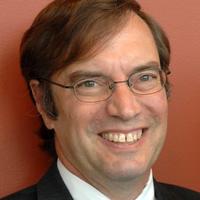Professor Jonathan Seidman

Working in tandem with Professor Christine Seidman, I have identified the major genetic causes of cardiac muscle diseases, including hypertrophic cardiomyopathy (HCM) and dilated cardiomyopathy (DCM). Capitalizing on my considerable expertise in computational biology, our joint laboratory has defined the allelic spectrum of damaging variants (including missense, loss of function, and splice site and splice enhancer variants, and noncoding sequences) in established or posited HCM and DCM genes through analyses of patients and population-based cohorts. I have developed robust strategies to engineer mutations into rodents and stem cell models, establishing reagents for biophysical analyses and for defining the cellular and molecular responses to genetic variants. By integrative analyses of genetic variants, functional analyses, and transcriptional responses, my work has identified key signals that are appropriate for therapeutic targeting. I have published 525 peer-reviewed manuscripts, as listed on PubMed. Find out more about his work.
Publications
Hypertrophic cardiomyopathy
Studies of HCM began with linkage analyses of large families, positional cloning of candidate genes and sequences analyses to define pathogenic variants. The Seidman lab's contemporary strategies involve direct analyses of exomes and genome analyses which causal variants remain unexplained. The lab identified five of the eight major genes that cause HCM and defined this as a disease of the sarcomere. We demonstrate a shared genetic etiology for HCM in adults and children and distinct causes for hypertrophy that occurs with additional manifestations. We have engineered mouse models and induced pluripotent stem cells to carry more that 40 endogenous mutations in a- and b-Myosin heavy chain Myosin-binding Protein C, a-Tropomyosin, and Protein Kinase AMP-activated Non-Catalytic Subunit Gamma 2. Using these reagents, we have interrogated molecular responses that evoked hypertrophic remodeling.
- Geisterfer‑Lowrance AAT, Kass S, Tanigawa G, Vosberg H‑P, McKenna W, Seidman CE*, Seidman JG*. A molecular basis for familial hypertrophic cardiomyopathy: a ß-cardiac myosin heavy chain gene missense mutation. Cell. 1990;62:999‑1006. doi: 10.1016/0092-8674(90)90274-i.
- Geisterfer-Lowrance AAT, Christe M, Conner DA, Ingwall JS, Schoen FJ, Seidman CE*, Seidman JG*. A mouse model of familial hypertrophic cardiomyopathy. Science. 1996;272(5262):731-4. doi: 10.1126/science.272.5262.731.
- Arad M, Maron BJ, Gorham JM, Johnson WH, Saul JP, Perez-Atayde AR, Spirito P, Wright, GB, Kanter RJ, Seidman CE* Seidman JG*. Glycogen storage diseases presenting as hypertrophic cardiomyopathy. New Engl. J Med. 2005;352(4):362-372. doi: 10.1056/NEJMoa033349.
- Kim JB, Porreca GJ, Greenway, SC, Gorham JM, Church GM, Seidman CE*, Seidman JG*. Polony multiplex analysis of gene expression (PMAGE) in mouse hypertrophic cardiomyopathy. Science. 2007;316:1481-1484. doi: 10.1126/science.1137325.
Human genetic analyses of dilated cardiomyopathy
We identified causal genes and damaging variants in the major causes of DCM (MYH7, MYBPC3, TPM3, TNNT2, LMNA, TTN), and developed mouse and stem cell models and to interrogate the pathophysiologic mechanisms by which DCM emerges. These studies defined critical molecules that promote cardiac fibrosis. From TTN studies we demonstrated that truncating mutations (TTNtv) are the most common genetic cause of DCM, occurring in 15-25% of ambulatory and familial DCM, and also in 10% of patients peripartum cardiomyopathy and cancer chemotherapy-induced cardiomyopathy. By engineering these into human cardiomyocytes derived from isogenic pluripotent stem cells (iPSC-CMs), we showed that TTNtv impair sarcomere formation, particularly in response to stress. Consistent with this, mice carrying Ttntv are more susceptible to anthracycline-induced DCM than wild-type mice.
- Kamisago M, Sharma SD, DePalma SR, Solomon S, Sharma P, McDonough B, Smoot L, Mullen MP, Woolf PK, Wigle ED, Seidman JG*, Seidman CE*. Mutations in sarcomere protein genes as a cause of dilated cardiomyopathy. N Engl J Med. 2000;343(23):1688-96. doi: 10.1056/NEJM200012073432304.
- Schmitt JP, Kamisago M, Asahi M, Li GH, Ahmad F, Mende U, Kranias EG, MacLennan DH, Seidman JG*, Seidman CE*. Dilated cardiomyopathy and heart failure caused by a mutation in Phospholamban. Science. 2003;299:1410-1413. doi: 10.1126/science.1081578.
- Ware JS, Li J, Mazaika E, Yasso CM, DeSouza T, Cappola TP, Tsai EJ, Hilfiker-Kleiner D, Kamiya CA, Mazzarotto F, Cook SA, Halder I, Prasad SK, Pisarcik J, Hanley-Yanez K, Alharethi R, Damp J, Hsich E, Elkayam U, Sheppard R, Kealey A, Alexis J, Ramani G, Safirstein J, Boehmer J, Pauly DF, Wittstein IS, Thohan V, Zucker MJ, Liu P, Gorcsan J 3rd, McNamara DM, Seidman CE, Seidman JG*, Arany Z*; IMAC-2 and IPAC Investigators. Shared Genetic Predisposition in Peripartum and Dilated Cardiomyopathies. N Engl J Med. 2016;374(3):233-41. doi: 10.1056/NEJMoa1505517
- Yotti R, Seidman CE, Seidman JG. Advances in the Genetic Basis and Pathogenesis of Sarcomere Cardiomyopathies. Annu Rev Genomics Hum Genet. 2019 Aug 31;20:129-153 doi: 10.1146/annurev-genom-083118-015306.
Experimental approaches to treat cardiomyopathy in animal and cultured cell models
Analyses of disease-causing mutations in model systems and in humans provided two avenues for developing therapeutics for HCM: a small molecule screen yielded MYK-461 (now known as Mavacamten) that modulates cardiac myosin ATPase and successfully reduces hypercontractility and inadequate relaxation in mouse and cell models with HCM mutations in MYH7 and MYBPC3.
A second and direct approach was the inactivation of the dominant-negative myosin heavy chain allele. We piloted this approach in HCM mice, harnessing AAV9-shRNA to specifically silence the allelic with the pathogenic variant. We also showed that silencing a common single nucleotide polymorphism on the mutated allele worked equally as well. This later approach could attenuate multiple different HCM missense variants using the same gene silencing agent. While both approaches were effective, durability was limited due to the gradual diminution of siRNA titers within cells. In the CureHeart project, we propose CAS9/CRISPR inactivation of the mutant allele, so as to provide life-long benefit.
- Green EM, Wakimoto H, Anderson RL, Evanchik MJ, Gorham JM, Harrison BC, Henze M, Kawas R, Oslob JD, Rodriguez HM, Song Y, Wan W, Leinwand LA, Spudich JA, McDowell RS*, Seidman JG*, Seidman CE*. A small-molecule inhibitor of sarcomere contractility suppresses hypertrophic cardiomyopathy in mice. Science. 2016;351(6273):617-21. doi: 10.1126/science.aad3456.
- Jiang J, Wakimoto H, Seidman JG*, Seidman CE*. Allele-specific silencing of mutant Myh6 transcripts in mice suppresses hypertrophic cardiomyopathy. Science. 2013;342(6154):111-4. doi: 10.1126/science.1236921.




